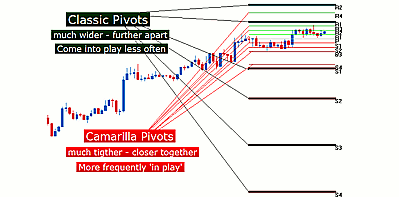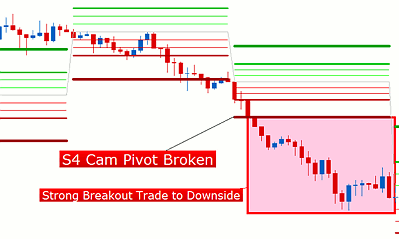James Stanley of DailyFX.com gives us a lesson on trading this specific type of pivot point.
From an equation once shrouded in mystery, a flavor of pivot points came to light that many short-term traders enjoy when plotted on the daily chart. The calculation of Camarilla Pivot Points produces considerably closer levels than other pivot variations might, leading to a more trading activity than other flavors of this popular support and resistance indicator.
This versatile indicator is thought to provide traders with not only a mannerism of managing risk, but also a mannerism of entering trades. In this article, we will outline each of these usages.
Risk Management
As we looked at in our article on Pivot Points, a simple mathematical calculation can help traders use the price data from the previous period to find support and resistance levels. The previous period can be defined as an hour, day, week, or month, with quite a few variations in between. With Camarilla Pivots, short-term traders will commonly look at the daily variety.
When price approaches the third level of support or resistance, many traders feel the chance of a reversal may be imminent. As such, those traders will often look to take profits at these levels if met while in a winning position. The picture below will show two reversals taking place within the same day on AUD/USD.
Alternatively, many traders also feel that if the fourth level of support or resistance is hit, the potential for a breakout may be increased. And if this is the case, those traders would want to contain the damage of incorrect trades if these levels get hit on losing positions, looking to place stops just outside of these prices.
Trading Cam Reversals
Since traders feel the propensity for a breakout may increase if the daily S3 or R3 pivot is hit, they may also look to place a trade in that direction. So, if R3 is hit, traders may look to sell while traders look to buy at S3.
This can be particularly helpful if being done in consideration of longer-term trends. As we looked at in our article on Pivot Points, traders can incorporate multiple time frame analysis in an effort to get a bigger picture view on the meaning of interactions with support or resistance levels.
If a trader observes a longer-term uptrend that they would like to buy cheaply, they may wait until price reaches the daily S3 Camarilla Pivot to do so. And the exact opposite can be true for longer-term downtrends, in which the trader looks to sell when price rises to the daily R3 Cam Pivot.
Trading Cam Breakouts
If price reaches the fourth level of support or resistance, something "big" may be happening in the market that is being traded.
As such, some traders will look at intersections with the S4 and R4 levels as an opportunity for trading a breakout, much in the manner we had looked at in the article Trading Breakouts in Currency Charts. The picture below illustrates such a setup:
James Stanley is a trading instructor with DailyFX.com.














